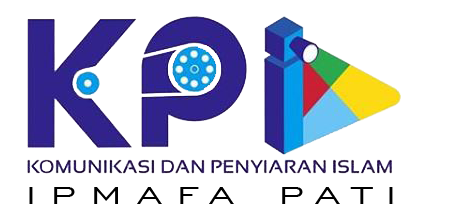Aktivitas Komunikator Politik Partai Gerindra dalam Peningkatan Perolehan Suara pada Pemilu 2024 di Kota Pekanbaru
Abstract
This research analyzes Gerindra Party's political communication strategy in increasing political participation through social media, focusing on young voters and political communicator activities. Using a descriptive qualitative approach, this research aims to describe and understand social phenomena from the perspective of participants, with a case study analysis model. The results show that Gerindra Party targets young voters as part of its electoral strategy. The party actively engages young voters through in-person and online discussion activities, and interacts on social media using casual language that is easily understood by the millennial generation. The activities of Gerindra's political communicators on social media aim to bridge the gap between young voters and political parties, as well as to build personal closeness. political parties, as well as building personal closeness. In addition, the announcement regarding Gerindra's legislative candidates for the Pekanbaru City DPRD in the 2024 Election is disseminated transparently through official letters. Overall, political communication strategy implemented by the Gerindra Party, through the activities of effective political communicators on social media, succeeded in increasing activities on social media, succeeded in increasing political participation, especially among young voters, political participation, especially among young voters.
References
Chabibi, M. “Polemik Marketing Politik Antara Image dan Substansi.” Jurnal Ekonomi Al-Tsiqoh (2020): 5.
Gunawan, Tedi. “Adaptasi Logika Media Sosial Sebagai Strategi Komunikasi Politik Gerindra Menjelang Pemilu 2024.” Jurnal Ilmu Komunikasi 22, no. 1 (April 2024): 45–48.
Kertamukti, R. Strategi Kreatif dalam Periklanan, Konsep Pesan, Media, Branding, Anggaran. Depok: Rajawali Pers, 2019.
Klinger, U., dan J. Svensson. The Power of Code: Women and the Making of the Digital World. Information, Communication and Society (2021): 24.
Klinger, U., dan J. Svensson. “The Emergence of Network Media Logic in Political Communication: A Theoretical Approach.” New Media and Society 20, no. 4 (2018): 1241–1257.
Li, F., J. Larimo, dan L. C. Leonidou. “Social Media Marketing Strategy: Definition, Conceptualization, Taxonomy, Validation, and Future Agenda.” Journal of the Academy of Marketing Science (2021): 51–70.
Rahmawati, Restu. “Strategi Dewan Pimpinan Daerah Partai Gerindra Provinsi DKI Jakarta pada Pemenangan Joko Widodo & Basuki Tjahaja Purnama pada Pilkada DKI Jakarta Tahun 2012.” Jurnal Ilmu Politik dan Pemerintahan 2, no. 2 (Juli 2016): 124–133.
Russmann, U. “Social Media as Strategic Campaign Tool: Austrian Political.
Parties Use of Social Media over Time.” Dalam Electoral Campaigns, Media, and the New World of Digital Politics, diedit oleh D. Taras dan R. Davis, 263–282. Michigan: University of Michigan Press, 2022.
Semiawan, Conny R. Metode Penelitian Kualitatif. Jakarta: Grasindo, 2020.
Seib, P. “New Media and Prospects for Democratization.” Dalam Palgrave Macmillan Series in International Political Communication, 1–17. 2017.
Swanson, D. L. “Political News in the Changing Environment of Political Journalism.” Dalam Political Communication in a New Era, diedit oleh P. J. Maarek dan G. Wolfsfeld, 132. London: Routledge, 2023.
Vaccari, C. “From Echo Chamber to Persuasive Device? Rethinking the Role of the Internet in Campaigns.” New Media & Society 15, no. 1 (2023): 109–127.

This work is licensed under a Creative Commons Attribution-ShareAlike 4.0 International License.
Copyright Notice
Authors who publish in this journal agree to the following terms:
- Authors retain copyright and grant the journal right of first publication with the work simultaneously licensed under a Creative Commons Attribution-ShareAlike 4.0 International License. that allows others to share the work with an acknowledgment of the work's authorship and initial publication in this journal.
- Authors are able to enter into separate, additional contractual arrangements for the non-exclusive distribution of the journal's published version of the work (e.g., post it to an institutional repository or publish it in a book), with an acknowledgment of its initial publication in this journal.
- Authors are permitted and encouraged to post their work online (e.g., in institutional repositories or on their website) prior to and during the submission process, as it can lead to productive exchanges, as well as earlier and greater citation of published work.

This work is licensed under Creative Commons Attribution-ShareAlike 4.0 International License.










